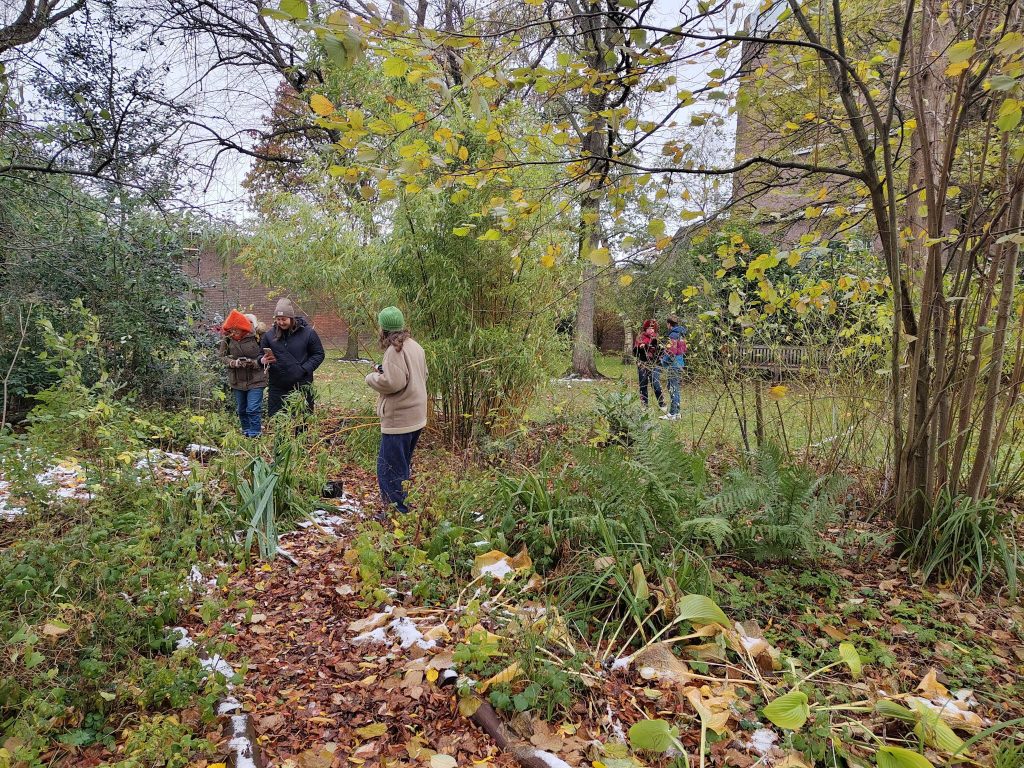On a snowy November lunchtime, in icy air, colleagues from across the University joined the Sustainability team at Kings Gate stairs for a tour of the trees. Despite the unfavourable conditions the group remained undeterred, donning layers to shield the cold and a particularly brilliant array of hats. Once participants had a chance to download the iNaturalist app and join the Newcastle University Campus Biodiversity Network, we were off!



Our loop around campus took us past the Arches, Quadrangle, entrance to the Courtyard Cafe, Claremont Quad and across Claremont Road into Drummond Quad before returning to Kings Gate. If you want to check out some of these Green Spaces have a look at our Sustainable Campus Map!
In total 39 new observations were recorded on our Campus Project Page across the Winter Wander. This comprised of 32 different species: 1 bird, 1 insect, 2 fungi, and 28 different plants (of course plenty of trees).
Here are some highlights (top 3 trees and 2 special mentions):
1. Weeping Willow (Salix babylonica)
Arguably one of the most iconic trees on campus, it’s the weeping willow that sways over the Fine Art entrance beside the Arches.

iNaturalist user smah1

2. Ginkgo (Ginkgo biloba)
Also known as the “maidenhair tree” it is found in the Quadrangle. Native to East-Asia it was historically known as “silver fruit” or “white fruit” in Chinese. Due to a centuries old transcription error, it got the name “Gingko”.

Captured on campus by
iNaturalist user steph50665

Reference image from iNaturalist website
3. Common Yew (Taxus baccata)
This festive looking tree, adorned with striking red berries is not to be messed with. This old-world species of evergreen tree is completely poisonous, apart from the red flesh of the berries (although the seed inside is).

iNaturalist user olivia_______

4. Jelly Ear Fungi (Auricularia auricula-judae)
These gelatinous looking fungi were spotted on a branch in the Quadrangle.

iNaturalist user carys2030

5. Dunnock (Prunella Modularis) – carys2030
Photographing any bird is tricky! But one walker managed to snap a photo of this little Dunnock hiding out under the bench outside the Old Library.

iNaturalist user carys2030

Reference image from iNaturalist website
Thank you to all who joined us and contributed to the observations, laughs and impromptu litter pick! We look forward to seeing more iNaturalist spots over the Winter months.



















